Table of Contents
Spotlight On Speech Codes 2018

Major Findings
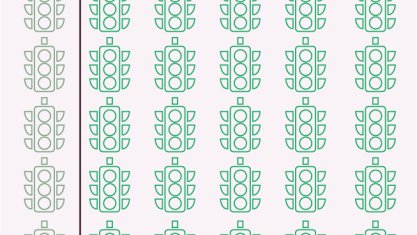
- Just under one-third (32.3 percent) of surveyed institutions received FIRE’s lowest, red light rating for maintaining speech codes that clearly and substantially restrict freedom of speech. This year’s figure is seven percentage points lower than last year and almost 42 percentage points lower than in FIRE’s 2009 report.
- Most institutions — 58.6 percent — receive a yellow light rating. Yellow light policies restrict narrower categories of speech than red light policies do, or are vaguely worded in a way that could too easily be used to suppress protected speech, and are unconstitutional at public universities.
- Thirty-five institutions earned FIRE’s highest, green light rating for free speech. Since this year’s report was written, two more universities have earned green light status, bringing the total to 37. Only eight institutions earned this rating in the 2009 report.
- Approximately one in ten institutions maintain a “free speech zone” where student demonstrations and other expressive activities are limited to small or out-of-the-way areas on campus.
- Twenty-seven schools or faculty bodies (up seven from last year) have adopted statements in support of free speech modeled after the one adopted by the University of Chicago in January 2015.
- Fully 30 percent of institutions maintain some form of bias response team, specifically tasked with identifying “bias” and “hate speech” on campus. These teams can rely on students anonymously reporting other students for speech which, though subjectively seen as “offensive,” is often fully protected speech. More than half of private institutions surveyed have implemented bias response teams.
Executive Summary
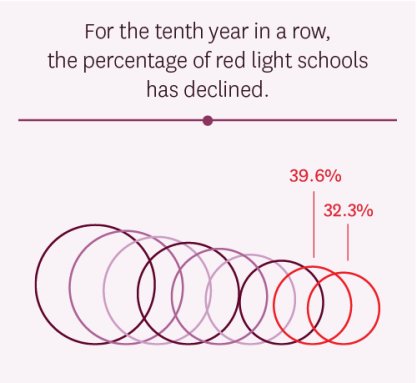
Despite the critical importance of free speech on campus, too many universities — in policy and in practice — chill, censor, and punish students’ and faculty members’ expressive activity. One way that universities do this is through the use of speech codes: policies prohibiting speech that, outside the bounds of campus, would be protected by the First Amendment.
FIRE surveyed 461 colleges and universities for this report and found that just under one-third (32.3 percent) of those schools maintain severely restrictive, “red light” speech codes that clearly and substantially prohibit constitutionally protected speech. While even one speech code is too many, this is the tenth year in a row that the percentage of red light schools has declined, and this year’s drop was more than seven percentage points. (Last year, 39.6 percent of schools earned a red light rating.)
The majority of institutions surveyed (58.6 percent) earned a “yellow light” rating, which means their policies still chill or outright prohibit protected speech, albeit to a lesser degree than at a red light institution. While the continued decline in red light institutions is cause for optimism, we will work in the coming years to make the number of yellow light institutions decline dramatically as well.
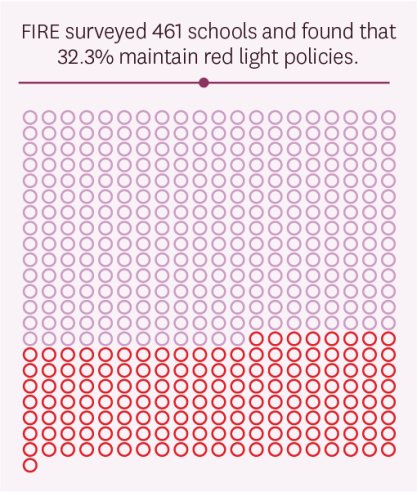
In the best news of all, an unprecedented number of schools have eliminated all of their speech codes to earn FIRE’s highest, “green light” rating: As of September 2017, thirty-five schools received a green light rating from FIRE. This number is up from twenty-seven schools as of last year’s report. In addition, more schools continue to adopt statements in support of free speech modeled after the one adopted by the University of Chicago in January 2015. As of this writing, twenty-seven of the 461 schools surveyed by FIRE for this report have endorsed a version of the “Chicago Statement.”
Despite the continued decline in speech codes, however, free speech on campus remains under serious threat. Student, faculty, and administrative demands for censorship of controversial or offensive speech are common, and an unacceptable number of universities continue to punish students and faculty for constitutionally protected speech and expression.
It is imperative, therefore, that those who care about free speech on campus continue to stay vigilant. The decrease in speech codes and the proliferation of free speech policy statements are the result of the relentless work of free speech advocates. We must keep up that work to avoid losing ground amid the current of hostility towards free speech that is very much alive on campus and elsewhere.
Methodology
FIRE surveyed publicly available policies at 357 four-year public institutions and at 104 of the nation’s largest and/or most prestigious private institutions. Our research focuses in particular on public universities because, as explained in detail below, public universities are legally bound to protect students’ right to free speech and can be successfully sued in court when they do not.
FIRE rates colleges and universities as “red light,” “yellow light,” or “green light” based on how much, if any, protected speech their written policies restrict. FIRE defines these terms as follows:

Red Light: A red light institution is one that has at least one policy both clearly and substantially restricting freedom of speech, or that bars public access to its speech-related policies by requiring a university login and password for access. A “clear” restriction is one that unambiguously infringes on protected expression. In other words, the threat to free speech at a red light institution is obvious on the face of the policy and does not depend on how the policy is applied. A “substantial” restriction on free speech is one that is broadly applicable to campus expression. For example, a ban on “offensive speech” would be a clear violation (in that it is unambiguous) as well as a substantial violation (in that it covers a great deal of what would be protected expression in the larger society). Such a policy would earn a university a red light.
When a university restricts access to its speech-related policies by requiring a login and password, it denies prospective students and their parents the ability to weigh this crucial information prior to matriculation. At FIRE, we consider this denial to be so deceptive and serious that it alone warrants a red light rating.

Yellow Light: A yellow light institution maintains policies that could be interpreted to suppress protected speech or policies that, while clearly restricting freedom of speech, restrict relatively narrow categories of speech. For example, a policy banning “verbal abuse” has broad applicability and poses a substantial threat to free speech, but it is not a clear violation because “abuse” might refer to unprotected speech, such as threats of violence or unlawful harassment. Similarly, while a policy banning “posters promoting alcohol consumption” clearly restricts speech, it is relatively limited in scope. Yellow light policies are typically unconstitutional[1], and a rating of yellow light rather than red light in no way means that FIRE condones a university’s restrictions on speech. Rather, it means that in FIRE’s judgment, those restrictions do not clearly and substantially restrict speech in the manner necessary to warrant a red light rating.

Green Light: If FIRE finds that a university’s policies do not seriously threaten campus expression, that college or university receives a green light rating. A green light rating does not necessarily indicate that a school actively supports free expression in practice; it simply means that the school’s written policies do not pose a serious threat to free speech.

Warning: Does Not Promise Free Speech: FIRE believes that free speech is not only a moral imperative, but also an essential element of a college education. However, private universities are just that — private associations — and as such, they possess their own right to free association, which allows them to prioritize other values above the right to free speech if they wish to do so. Therefore, when a private university clearly and consistently states that it holds a certain set of values above a commitment to freedom of speech, FIRE warns prospective students and faculty members of this fact.[2] Seven surveyed schools meet these criteria.[3]
Findings
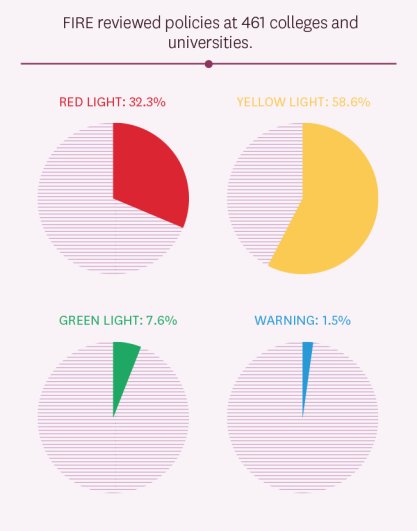
Of the 461 schools reviewed by FIRE, 149 — or 32.3 percent — received a red light rating. 270 schools received a yellow light rating (58.6 percent), and thirty-five received a green light rating (7.6 percent). FIRE did not rate seven schools (1.5 percent).[4]
This is the tenth year in a row that the percentage of schools maintaining red light speech codes has fallen, and the findings represent a drop of more than seven percentage points from last year, when 39.6 percent of schools received a red light rating. Additionally, the number of green light institutions has more than quadrupled, from eight institutions ten years ago to thirty-five this year.[5]
Public Colleges and Universities
The percentage of public institutions with a red light rating dropped again this year, from 33.9 percent last year to 26 percent this year. Overall, of the 357 public universities reviewed for this report, ninety-three received a red light rating (26 percent), 233 received a yellow light rating (65.3 percent), and thirty-one received a green light rating (8.7 percent). In November 2016, FIRE sent a certified mailing regarding First Amendment compliance to every public university receiving a red light rating.[6] FIRE’s letter reminded recipient
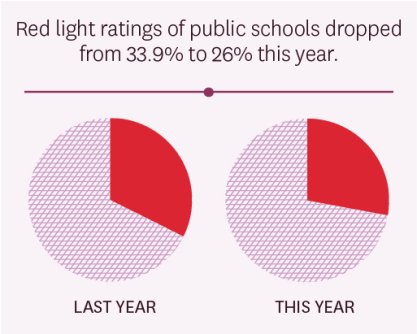
institutions of U.S. House Judiciary Committee Chairman Representative Bob Goodlatte’s August 2015 letter urging administrators at red light schools to revise policies that violate the First Amendment. Further, the mailing warned that university administrators who continue to violate clearly established law with respect to expressive rights risk losing their “qualified immunity” — meaning they could be held personally liable for monetary damages in a student or faculty member’s lawsuit.
Since public colleges and universities are legally bound to protect their students’ First Amendment rights, any speech codes — red or yellow light — are unacceptable. Much work remains to be done. This ongoing positive trend, however, is encouraging. With continued efforts by free speech advocates on and off campus, we expect this percentage will continue to drop.
Private Colleges and Universities
The percentage of private universities earning a red light rating, which stood at 58.7 percent last year, fell nearly five percentage points to 53.9 percent. While private universities are not legally bound by the First Amendment — which regulates government actors — most make extensive promises of free speech to their students and faculty. When private institutions make such promises, speech codes impermissibly violate them.
Of the 104 private colleges and universities reviewed, fifty-six (53.9 percent) received a red light rating, thirty-seven (35.6 percent) received a yellow light rating, four (3.8 percent) received a green light rating, and seven (6.7 percent) were not rated.
Discussion
Speech Codes on Campus: Background and Legal Challenges
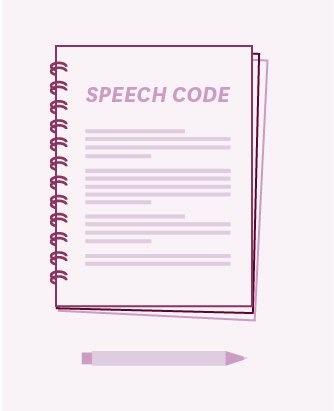
Speech codes — university regulations prohibiting expression that would be constitutionally protected in society at large — gained popularity with college administrators in the 1980s and 1990s. As discriminatory barriers to education declined, female and minority enrollment increased. Concerned that these changes would cause tension and that students who finally had full educational access would arrive at institutions only to be offended by other students hostile to their presence, college administrators enacted speech codes.
In the mid-1990s, the phenomenon of campus speech codes converged with the expansion of Title IX, the federal law prohibiting sex discrimination in educational institutions receiving federal funds.[7] In 1994, the Department of Education’s Office for Civil Rights (OCR) — the federal agency that oversees the implementation and enforcement of Title IX — investigated Santa Rosa Junior College after two women complained about comments made about them on an online college bulletin board that included “anatomically explicit and sexually derogatory terms.”[8] In a letter to the college, OCR concluded that the offensive speech had created a “hostile educational environment” for the complainants and directed the college to adopt a policy banning, among other things, online speech that “has the purpose or effect of creating a hostile, intimidating or offensive educational environment.”[9] Soon thereafter, when the University of Massachusetts faced criticism over a broad new proposed harassment policy in 1995, then-chancellor David K. Scott “responded to criticism by suggesting that a code was required by Federal Department of Education regulations.”[10]
In enacting speech codes, administrators ignored or did not fully consider the philosophical, social, and legal ramifications of placing restrictions on speech, particularly at public universities. As a result, federal courts have overturned speech codes at numerous colleges and universities over the past two decades.[11]
Despite the overwhelming weight of legal authority against speech codes, a large number of institutions — including some of those that have been successfully sued on First Amendment grounds — still maintain unconstitutional speech codes. It is with this unfortunate fact in mind that we turn to a more detailed discussion of the ways in which campus speech codes violate individual rights and what can be done to challenge them.
Public Universities vs. Private Universities
With limited, narrowly defined exceptions, the First Amendment prohibits the government — including governmental entities such as state universities — from restricting the freedom of speech. A good rule of thumb is that if a state law would be declared unconstitutional for violating the First Amendment, a similar regulation at a state college or university is likewise unconstitutional.
The guarantees of the First Amendment generally do not apply to students at private colleges because the First Amendment regulates only government — not private — conduct.[12] Moreover, although acceptance of federal funding does confer some obligations upon private colleges (such as compliance with federal anti-discrimination laws), compliance with the First Amendment is not one of them.
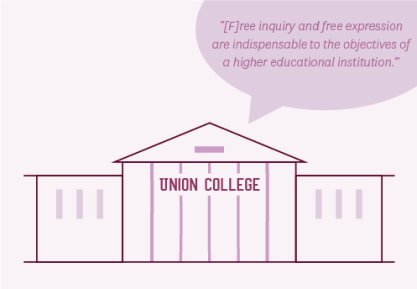
This does not mean, however, that students and faculty at private schools are not entitled to free expression. In fact, most private universities explicitly promise freedom of speech and academic freedom. Whitman College, for example, promises students the “freedom of speech, expression, and association.”[13] Similarly, according to Union College's student handbook, “free inquiry and free expression are indispensable to the objectives of a higher educational institution.”[14] Yet both of these institutions, along with most other private colleges and universities, maintain policies that prohibit the very speech they promise to protect.
Continuing a trend that began last year, more private schools continue to adopt statements in support of free speech modeled after the one produced in January 2015 by the Committee on Freedom of Expression at the University of Chicago.[15] In February 2017, for example, Franklin & Marshall College adopted a Chicago-style Statement on Freedom of Expression into the college’s Faculty Handbook to reflect the fact that “Franklin & Marshall College is committed to the ideal of free and open inquiry in all matters.”[16] Georgetown University adopted a similar statement in June 2017, stating:
As an institution of higher education, one specifically committed to the Catholic and Jesuit tradition, Georgetown University is committed to free and open inquiry, deliberation and debate in all matters, and the untrammeled verbal and nonverbal expression of ideas. It is Georgetown University’s policy to provide all members of the University community, including faculty, students, and staff, the broadest possible latitude to speak, write, listen, challenge, and learn.[17]
Given that these and other institutions are choosing to strengthen their commitments to free speech at a time when student calls for censorship seem louder than ever, we hope this trend signals a growing understanding, among private school administrators, of the need to protect free speech in higher education quite apart from constitutional questions.
What Exactly Is “Free Speech,” And How Do Universities Curtail It?
What does FIRE mean when we say that a university restricts “free speech”? Do people have the right to say absolutely anything, or are certain types of expression unprotected?
Simply put, the overwhelming majority of speech is protected by the First Amendment. Over the years, the Supreme Court has carved out a limited number of narrow exceptions to the First Amendment: speech that incites reasonable people to immediate violence; so-called “fighting words” (face-to-face confrontations that lead to physical altercations); harassment; true threats and intimidation; obscenity; and defamation. If the speech in question does not fall within one of these exceptions, it most likely is protected speech.
The exceptions are often misapplied and abused by universities to punish constitutionally protected speech. There are instances where the written policy at issue may be constitutional —for example, a prohibition on “incitement” — but its application may not be. In other instances, a written policy will purport to be a legitimate ban on a category of unprotected speech like harassment or true threats, but (either deliberately or through poor drafting) will encompass protected speech as well. Therefore, it is important to understand what these narrow exceptions to free speech actually mean in order to recognize when they are being misapplied.
Threats and Intimidation
The Supreme Court has defined “true threats” as “statements where the speaker means to communicate a serious expression of an intent to commit an act of unlawful violence to a particular individual or group of individuals.” Virginia v. Black, 538 U.S. 343, 359 (2003). The Court also has defined “intimidation,” of the type not protected by the First Amendment, as a “type of true threat, where a speaker directs a threat to a person or group of persons with the intent of placing the victim in fear of bodily harm or death.” Id. at 360. Neither term would encompass, for example, a vaguely worded statement that is not directed at anyone in particular.

Nevertheless, universities frequently misapply policies prohibiting threats and intimidation so as to infringe on protected speech, citing generalized concerns about safety without regard to the actual boundaries of unprotected speech.
In February 2017, for example, a Linfield College student group invited Jordan Peterson — a psychology professor at the University of Toronto and an outspoken critic of what he perceives as political indoctrination at universities — to speak on campus. A few days in advance of his planned speech, Peterson tweeted, “I’m violating some more safe spaces soon: Linfield College, April 24.”[18] The next day, Vice President for Academic Affairs and Dean of Faculty Susan Agre-Kippenhan informed the campus community that Peterson would no longer be allowed to speak at Linfield, claiming his tweet constituted “the use or threat of force” and “intimidation.”[19]
In a letter to Linfield, FIRE reminded the college of the legal definition of a threat, and wrote that
Peterson’s tweet falls far short of this threshold. By any reasonable reading, his statement about “violat[ing]” a “safe space” reveals an intent to introduce potentially controversial ideas to a community he believes to be unwilling to encounter them, not intent to physically harm that community. Peterson is in no way implying that he intends to use “force” against any member of the Linfield community. To pretend otherwise is disappointingly disingenuous and flatly ignores the obvious hyperbole in his tweet. If Peterson had tweeted that he planned to “blow some minds at Linfield,” would administrators have called in a bomb squad? It would seem unlikely. Specialized legal knowledge is unnecessary to conclude that Peterson’s tweet is not a “threat.”
FIRE does not discount Linfield’s duties to maintain a safe environment for its students and respond quickly and responsibly to genuine threats. But as an institution that has committed itself to “the principles underlying constitutionally protected free expression,” Linfield has a fundamental responsibility to protect the free speech rights of its students. It cannot abandon those duties simply because a student group invited a speaker who used hyperbolic language on an online platform that awards greater attention to those who use hyperbolic language.[20]
Incitement
There is also a propensity among universities to restrict speech that offends other students on the basis that it constitutes “incitement.” The basic concept, as administrators too often see it, is that offensive or provocative speech will anger those who disagree with it, perhaps so much so that it moves them to violence. While preventing violence is an admirable goal, this is an impermissible misapplication of the incitement doctrine.
Incitement, in the legal sense, does not refer to speech that may lead to violence on the part of those opposed to or angered by it, but rather to speech that will lead those who agree with it to commit immediate violence. In other words, the danger is that certain speech will convince sympathetic, willing listeners to take immediate unlawful action. The paradigmatic example of incitement is a person standing on the steps of a courthouse in front of a torch-wielding mob and urging that mob to burn down the courthouse immediately. To misapply the doctrine to encompass an opposing party’s reaction to speech they dislike is to convert the doctrine into an impermissible “heckler’s veto,” where violence threatened by those angry about particular speech is used as a reason to censor that speech. As the Supreme Court has made clear, speech cannot be prohibited because it “might offend a hostile mob” or because it may prove “unpopular with bottle throwers.”[21]

The legal standard for incitement was announced in the Supreme Court’s decision in Brandenburg v. Ohio, 395 U.S. 444 (1969). There, the Court held that the state may not “forbid or proscribe advocacy of the use of force or of law violation except where such advocacy is directed to inciting or producing imminent lawless action and is likely to incite or produce such action.” Id. at 447 (emphasis in original). This is an exacting standard, as evidenced by its application in subsequent cases.
For instance, in Hess v. Indiana, 414 U.S. 105 (1973), the Supreme Court held that a man who had loudly stated, “We’ll take the fucking street later” during an anti-war demonstration did not intend to incite or produce immediate lawless action. The Court found that “at worst, it amounted to nothing more than advocacy of illegal action at some indefinite future time,” and that the man was therefore not guilty under a state disorderly conduct statute. Id. at 108–09. The fact that the Court ruled in favor of the speaker despite the use of such strong and unequivocal language underscores the narrow construction that has traditionally been given to the incitement doctrine and its requirements of likelihood and immediacy. Nonetheless, college administrations have been all too willing to abuse or ignore this jurisprudence.
Obscenity
The Supreme Court has held that obscene expression, to fall outside of the protection of the First Amendment, must “depict or describe sexual conduct” and must be “limited to works which, taken as a whole, appeal to the prurient interest in sex, which portray sexual conduct in a patently offensive way, and which, taken as a whole, do not have serious literary, artistic, political, or scientific value.” Miller v. California, 413 U.S. 15, 24 (1973).
This is a narrow definition applicable only to some highly graphic sexual material. It does not encompass profanity, even though profane words are often colloquially referred to as “obscenities.” In fact, the Supreme Court has explicitly held that profanity is constitutionally protected. In Cohen v. California, 403 U.S. 15 (1971), the defendant, Paul Robert Cohen, was convicted in California for wearing a jacket bearing the words “Fuck the Draft” in a courthouse. The Supreme Court overturned Cohen’s conviction, holding that the message on his jacket, however vulgar, was protected speech.
Similarly, in Papish v. Board of Curators of the University of Missouri, 410 U.S. 667 (1973), the Court determined that a student newspaper article entitled “Motherfucker Acquitted” was constitutionally protected speech. The Court wrote that “the mere dissemination of ideas — no matter how offensive to good taste — on a state university campus may not be shut off in the name alone of ‘conventions of decency.’” Id. at 670. Nonetheless, many colleges erroneously believe that they may legitimately prohibit profanity and vulgar expression.
The University of New Hampshire, for example, recently removed a female student’s display seeking to raise awareness of “street harassment” during Sexual Assault Awareness Month because the display, which listed actual examples of harassment experienced by UNH students, contained “profane” and “vulgar” language in violation of university policy.[22]
UNH is far from the only institution to prohibit profane or vulgar expression, particularly in posted materials. For example:
- According to Virginia State University’s Community Living Guide, “[p]rofanity is prohibited at Virginia State University.”[23]
- At Cal Poly Pomona, housing officials may remove posted materials from sight if they contain “obscenities.”[24]
Harassment
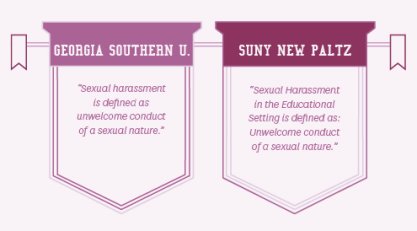
Harassment, properly defined, is not protected by the First Amendment. In the educational context, the Supreme Court has defined student-on-student harassment as discriminatory, unwelcome conduct “so severe, pervasive, and objectively offensive that it effectively bars the victim’s access to an educational opportunity or benefit.” Davis v. Monroe County Board of Education, 526 U.S. 629, 633 (1999). This is not simply expression; it is conduct far beyond the protected expressive activities that are too often deemed “harassment” on today’s college campus. Harassment is extreme and usually repetitive behavior — behavior so serious that it would interfere with a reasonable person’s ability to receive his or her education. For example, in Davis, the conduct found by the Court to be harassment was a months-long pattern of conduct including repeated attempts to touch the victim’s breasts and genitals together with repeated sexually explicit comments directed at and about the victim.
For decades now, however, many colleges and universities have maintained policies defining harassment too broadly and prohibiting constitutionally protected speech. And years of overly aggressive Title IX enforcement by the Department of Education’s Office for Civil Rights (OCR), including an unconstitutionally broad definition of sexual harassment promulgated by OCR,[25] has led numerous colleges and universities to enact more restrictive policies in an effort to avoid an OCR investigation. Although OCR has recently signaled a return to a more speech-protective approach to Title IX enforcement,[26] it will likely take years (if not decades) of work by free speech advocates to undo the damage caused by OCR over the past eight years.
Here are just two examples of overly broad sexual harassment policies based on OCR’s definition:
- At Georgia Southern University, “Sexual harassment is defined as unwelcome conduct of a sexual nature.”[27]
- At SUNY New Paltz, “Sexual Harassment in the Educational Setting is defined as: Unwelcome conduct of a sexual nature.”[28]
These examples, along with many others, demonstrate that colleges and universities often fail to limit themselves to the narrow definition of harassment that is outside the realm of constitutional protection. Instead, they expand the term to prohibit broad categories of speech that do not even approach actual harassment, despite similar policies having been struck down by federal courts years earlier.[29]
These vague and overly broad harassment policies deprive students and faculty of their free speech and academic freedom rights. In May 2017, for example, Howard University law professor Reginald Robinson was found guilty of sexual harassment after two students complained about a test question involving a salon client who believed she might have been touched inappropriately after falling asleep during a Brazilian wax. After a 504-day investigation, administrators determined that Robinson would be required to undergo mandatory sensitivity training and submit to classroom observation and prior administrative review of future test questions. The university also warned Robinson that any further “violations” of the university’s Title IX policies could result in his termination.
Robinson’s case has particularly distressing implications for professors’ academic freedom if you consider the nature of law school exam hypotheticals, which purposefully require law students to apply the legal principles they are learning to unusual or difficult cases. As FIRE wrote in a letter to Howard University,
All law students in the United States can expect to encounter descriptions of scenarios that involve sexual touching, even if they learn only the subjects tested on bar examinations in all jurisdictions, which include rape and other criminal infractions. The simple fact that a test question involves touching of a hypothetical individual’s genitals and the word “genitals” would not, therefore, unreasonably interfere with any law student’s education.
Any student with even the most basic understanding of the first-year topics taught almost uniformly nationwide would expect such hypothetical questions, and any law student who graduates without having encountered such a question is likely a step behind in learning the knowledge necessary to become a licensed attorney.[30]
Having discussed the most common ways in which universities misuse the narrow exceptions to free speech to prohibit protected expression, we now turn to university regulations that restrict free speech and expression on their face. Such restrictions are generally found in several distinct types of policies.
Anti-Bullying Policies
In recent years, “bullying” has garnered a great deal of media attention, bringing pressure on legislators and school administrators at both the K–12 and college levels to crack down on speech that causes emotional harm to other students. On October 26, 2010, OCR issued a letter on the topic of bullying, reminding educational institutions that they must address actionable harassment, but also acknowledging that “[s]ome conduct alleged to be harassment may implicate the First Amendment rights to free speech or expression.”[31] For such situations, OCR’s letter refers readers back to the 2003 “Dear Colleague” letter stating that harassment is conduct that goes far beyond merely offensive speech and expression. However, because it is primarily focused on bullying in the K–12 setting, the letter also urges an in loco parentis[32] approach that is inappropriate in the college setting, where students are overwhelmingly adults.
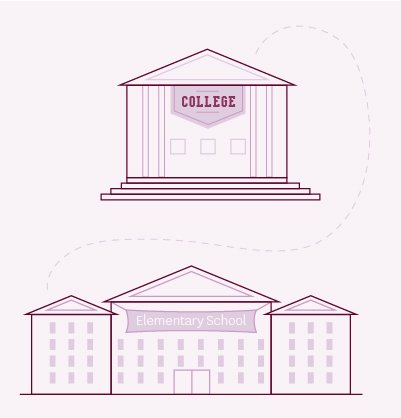
Court decisions and other guidance regarding K–12 speech has a way of “trickling up” to the collegiate setting, and indeed, FIRE has seen a dramatic increase in the number of university policies prohibiting bullying. Unfortunately, many of these policies infringe on or outright prohibit protected speech.
At Gettysburg College, for example, bullying is defined as “unwelcome or unreasonable behavior that demeans, offends, or humiliates people either as individuals or as a group.”[33] And at Idaho State University, “[b]ullying includes harsh practical jokes, spreading rumors and gossip, teasing, taunting and using social media to humiliate and ridicule others; using aggressive communication such as insults, offensive remarks, shouting, yelling, angry outbursts, and invading others personal space; and taking intentional actions to exclude or ostracize others from a group.”[34]
But as courts have held in rulings spanning decades, speech cannot be prohibited simply because someone else finds it offensive, even deeply so.[35] Offensive speech, if it does not rise to the level of harassment or one of the other narrow categories of unprotected speech, is entitled to constitutional protection (and, accordingly, to protection at private institutions that claim to uphold the right to free speech).
Policies on Tolerance, Respect, and Civility
Many schools invoke laudable goals like respect and civility to justify policies that violate students’ and faculty members’ free speech rights. While a university has every right to promote a tolerant and respectful atmosphere on campus, a university that claims to respect free speech must not limit speech to only the inoffensive and respectful. And although pleas for civility and respect are often initially framed as requests, many schools have speech codes that effectively turn those requests into requirements.
For example:
- At Utah State University, “[a]ll interactions with faculty members, staff members, and other students shall be conducted with courtesy, civility, decency, and a concern for personal dignity.”[36]
- Lafayette College’s Code of Conduct provides that “[i]n addition to exhibiting maturity and self-control, students and student organizations are expected to so conduct themselves that they cause no physical, emotional, or mental harm to others.”[37]
While respect and civility may seem uncontroversial, most uncivil or disrespectful speech is protected by the First Amendment,[38] and is indeed sometimes of great political and social significance. Some of the expression employed in the civil rights movement of the 1950s and 60s, for example, would violate campus civility codes today. Colleges and universities may encourage civility, but public universities — and those private universities that purport to respect students’ fundamental free speech rights — may not require it or threaten mere incivility with disciplinary action.
Internet Usage Policies
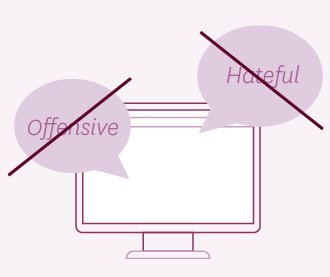
A great deal of expression now takes place online, whether over email or on sites like Facebook and Twitter. Therefore, university policies regulating online expression, while perhaps appearing to be narrow, can actually have a significant impact on students’ and faculty members’ free speech rights.
Examples of impermissibly restrictive internet usage policies from the 2016–2017 academic year include the following:
- At Black Hills State University in South Dakota, the university’s “email system shall not to be used for the creation or distribution of any disruptive or offensive messages, including offensive comments about race, gender, hair color, disabilities, age, sexual orientation, pornography, religious beliefs and practice, political beliefs, or national origin. Employees or students who receive any emails with this content from any Black Hills State University employee or student should report the matter to the appropriate authorities immediately.”[39]
- Dartmouth College prohibits use of the college’s information technology resources to “post or transmit” content that is “offensive” or “hateful.” Neither term is further defined.[40]
Policies on Bias and Hate Speech
In recent years, colleges and universities around the country have instituted policies and procedures specifically aimed at eliminating “bias” and “hate speech” on campus. These sets of policies and procedures, frequently termed “Bias Reporting Protocols” or “Bias Incident Protocols,” often include speech codes prohibiting extensive amounts of protected expression. While speech or expression that is based on a speaker’s prejudice may be offensive, it is entirely protected unless it rises to the level of unprotected speech (harassment, threats, and so forth). The speaker’s motive has no bearing on whether or not the speech is protected.
These protocols often also infringe on students’ right to due process, allowing for anonymous reporting that denies students the right to confront their accusers. Moreover, universities are often heavily invested in these bias incident policies, having set up entire regulatory frameworks and response protocols devoted solely to addressing them.
While many bias incident protocols do not include a separate enforcement mechanism, the reality is that the mere threat of a bias investigation will likely be sufficient to chill protected speech on controversial issues. And when the only conduct at issue is constitutionally protected speech, even investigation alone is inappropriate.
Of the 461 colleges and universities FIRE surveyed for this report, 140 of them — 30 percent — have some form of bias response team. Bias response teams appear to be particularly popular with private universities: of the 104 private institutions surveyed, fifty-three of them — 51 percent — have a bias response team.
Policies Governing Speakers, Demonstrations, and Rallies
Universities have a right to enact reasonable, narrowly tailored “time, place, and manner” restrictions that prevent demonstrations and other expressive activities from unduly interfering with the educational process. They may not, however, regulate speakers and demonstrations on the basis of content or viewpoint, nor may they maintain regulations that burden substantially more speech than is necessary to maintain an environment conducive to education. Policies governing speakers, demonstrations, and rallies fall into several general categories.
Security Fee Policies
In recent years, FIRE has seen a number of colleges and universities hamper — whether intentionally or just through a misunderstanding of the law — the invitation of controversial speakers by levying additional security costs on the sponsoring student organizations.
The Supreme Court addressed exactly this issue in Forsyth County v. Nationalist Movement, 505 U.S. 123 (1992), where it struck down an ordinance in Georgia that permitted the local government to set varying fees for events based upon how much police protection the event would need. Invalidating the ordinance, the Court wrote that “[t]he fee assessed will depend on the administrator’s measure of the amount of hostility likely to be created by the speech based on its content. Those wishing to express views unpopular with bottle throwers, for example, may have to pay more for their permit.” Id. at 134. Deciding that such a determination required county administrators to “examine the content of the message that is conveyed,” the Court wrote that “[l]isteners’ reaction to speech is not a content-neutral basis for regulation. … Speech cannot be financially burdened, any more than it can be punished or banned, simply because it might offend a hostile mob.” Id. at 134–35 (emphasis added).
Despite the clarity of the law on this issue, the impermissible use of security fees to burden controversial speech is all too common on university campuses.
In May 2017, for example, a student group at New Mexico State University (NMSU) hosted an event featuring a keynote address by conservative writer and speaker David Horowitz. Just days before the event, NMSU informed the student group that it would be required to pay over $300 to cover the cost of security that the NMSU Police Department deemed necessary in part due to “planned counter-protests.”
As FIRE explained in a July 2017 letter to NMSU, the university’s actions “unacceptably affixed a price tag to the group’s expressive activities,” noting that
By conditioning the financial burden imposed on a student group on the anticipated reaction to the viewpoints expressed at an event, NMSU impermissibly allows for the exercise of a “heckler’s veto” by anyone wishing to impede or silence a student group engaging in controversial or unpopular expression.[41]
In response, NMSU’s chancellor agreed that the university would cover the student group’s security cost for the Horowitz event and would review its regulations to ensure they complied with the university’s First Amendment obligations.[42]
Prior Restraints
The Supreme Court has held that “[i]t is offensive — not only to the values protected by the First Amendment, but to the very notion of a free society — that in the context of everyday public discourse a citizen must first inform the government of her desire to speak to her neighbors and then obtain a permit to do so.” Watchtower Bible and Tract Society of NY, Inc. v. Village of Stratton, 536 U.S. 150, 165–66 (2002). Yet many colleges and universities do just that, requiring students and student organizations to register their expressive activities well in advance and, often, to obtain administrative approval for those activities.
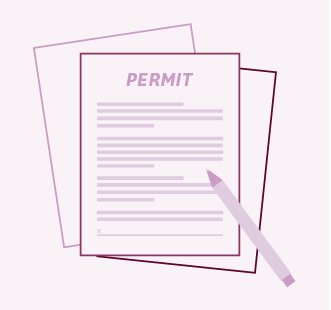
Last year, for example, Fairmont State University administrators told a student who was gathering signatures in support of a national campus libertarian group that he could not do so without first obtaining a permit. When the student sought clarification from an administrator, he was told that Fairmont State’s decision to require a permit would rest on “a judgment call based on campus security and what they feel is soliciting.”[43]
FIRE wrote to Fairmont State asking the university to revise the unconstitutional solicitation policy, which not only required students to get permission from administrators to engage in basic expressive activity, but also required them to provide copies of any literature they intended to hand out for advance approval. The university ultimately revised the policy, but many similarly unconstitutional policies remain on the books at other institutions.[44]
For example:
- At Athens State University, “[a]ll materials to be posted or distributed must be reviewed for University Policy compliance by the Office of Student Activities.” [45]
- Bridgewater State University requires that students and student groups obtain “the approval of the chief of police or designee at least 24 hours in advance” in order to distribute “non-commercial pamphlets, handbills, circulars, newspapers, magazines, and other written materials” on campus.[46]
Free Speech Zone Policies
Of the 461 schools surveyed for this report, fifty-two of them (11 percent) have “free speech zone” policies — policies limiting student demonstrations and other expressive activities to small and/or out-of-the-way areas on campus.[47] Despite being inconsistent with the First Amendment, free speech zones are more common at public universities than at private universities: 13.7 percent of public universities surveyed maintain free speech zones, while just 4 percent of private universities do.
Free speech zones have repeatedly been struck down by courts or voluntarily revised as part of lawsuit settlements. FIRE’s Stand Up For Speech Litigation Project has included successful challenges to free speech zone policies at six colleges and universities and includes an ongoing challenge to a free speech zone policy at Los Angeles Pierce College.[48]
Several state legislatures also took action this year to prohibit public colleges and universities from maintaining free speech zones. In February 2017, Utah adopted the Campus Free Expression Act, which provides that public universities in the state may not prohibit:
(a) a member of the institution’s community or the public from spontaneously and contemporaneously assembling in an outdoor area of the institution’s campus; or
(b) a person from freely engaging in noncommercial expressive activity in an outdoor area of the institution's campus if the person’s conduct is lawful.[49]
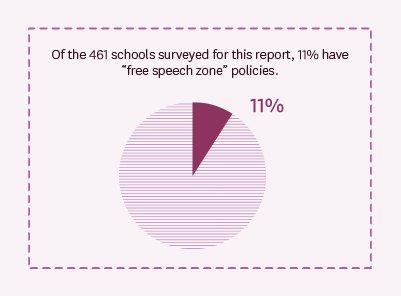
In April 2017, Colorado Governor John Hickenlooper signed a free speech bill providing that Colorado’s public colleges and universities may not “designate an area on campus as a free speech zone or otherwise create policies implying that its students’ expressive activities are restricted to particular areas of campus.”[50]
And in May 2017, Tennessee Governor Bill Haslam signed into law Senate Bill 723, the Campus Free Speech Protection Act, a comprehensive law providing some of the country’s strongest protections for student and faculty speech on public college campuses. Among other things, the law prohibits Tennessee’s public institutions from establishing free speech zones.[51]
Despite the unpopularity of free speech zones with judges and lawmakers, too many universities still maintain them. The University of South Dakota, for example, has just three “free speech areas” on campus, and “[a]nyone wishing to protest or demonstrate must complete a Non-Commercial Free Speech Request Form … and make reservations at least five (5) days prior to the event.”[52]
What Can Be Done?
The good news is that the types of restrictions discussed in this report can be defeated. A student can be a tremendously effective advocate for change when he or she is aware of First Amendment rights and is willing to engage administrators in defense of them. Public exposure is also critical to defeating speech codes, since universities are often unwilling to defend their speech codes in the face of public criticism.
Unconstitutional policies also can be defeated in court, especially at public universities, where speech codes have been struck down in federal courts across the country, and yet more speech codes have been revised in favor of free speech as the result of legal settlements.
Any speech code in force at a public university is vulnerable to a constitutional challenge. Moreover, as speech codes are consistently defeated in court, administrators are losing virtually any chance of credibly arguing that they are unaware of the law, which means that they may be held personally liable when they are responsible for their schools’ violations of constitutional rights.[53]
The suppression of free speech at American universities is a matter of great national concern. But supporters of liberty should take heart: While many colleges and universities might seem at times to believe that they exist in a vacuum, the truth is that neither our nation’s courts nor its citizens look favorably upon speech codes or other restrictions on basic freedoms.
Spotlight On: First Amendment Litigation
FIRE always aims to work amicably with college administrations to resolve concerns about students’ and faculty members’ free speech rights. Sometimes, however, it becomes necessary to resort to the courts to protect those rights.

In July 2014, FIRE launched our Stand Up For Speech Litigation Project, a national effort to eliminate unconstitutional speech codes through targeted First Amendment lawsuits. In June 2017, Stand Up For Speech scored its biggest victory to date when the U.S. Court of Appeals for the Eighth Circuit upheld an Iowa district court’s decision to permanently bar Iowa State University from using its trademark policy to prevent an ISU student group from printing t-shirts advocating marijuana legalization.[54] The decision was the tenth consecutive victory for the Stand Up For Speech Litigation Project and the first from a federal court of appeals.
Paul Gerlich and Erin Furleigh, the plaintiffs in the lawsuit, were members of the university’s student chapter of the National Organization for the Reform of Marijuana Laws (NORML ISU). In October 2012, NORML ISU received university approval for a group t-shirt that featured ISU mascot Cy the Cardinal’s head in place of the “O” in NORML. Later that fall, however, following criticism from members of the public and state officials, the university rescinded approval for the t-shirt, and several months after that adopted new guidelines prohibiting the use of the university’s trademark on designs that “suggest the promotion of” drugs or alcohol.
In upholding the district court’s ruling that ISU’s application of its trademark policy to NORML ISU’s expression violated the First Amendment, the Eighth Circuit held that ISU had engaged in impermissible viewpoint-based discrimination. The court ruled that “[t]he defendants’ rejection of NORML ISU’s designs discriminated against that group on the basis of the group’s viewpoint,” and that the university’s actions were taken “to contain the political controversy” that arose when state lawmakers criticized the t-shirts.[55]
The Eighth Circuit also upheld the district court’s denial of qualified immunity to the defendant ISU administrators, leaving them personally liable for monetary damages. The court held that NORML ISU’s right to be free from viewpoint discrimination under the university’s trademark licensing regime was clearly established at the time such that reasonable administrators should have understood the implications of their actions. According to the court, the law is clear that when a public college opens government property or offers a government benefit to all student groups, it may not discriminate in granting access based on a group’s chosen message.
Meanwhile, the Stand Up For Speech Litigation Project continues to challenge speech codes at campuses around the country, most recently with a suit against Los Angeles Pierce College.
In November 2016, Pierce student Kevin Shaw was approached by administrators while attempting to distribute Spanish-language copies of the U.S. Constitution and recruit new members for his student group, Young Americans for Liberty, along the main public walkway on campus. He was told that he could not distribute literature outside of the free speech zone — an area roughly the size of three parking spaces on Pierce’s 426-acre campus — and that he would need to apply for a permit to use the zone.
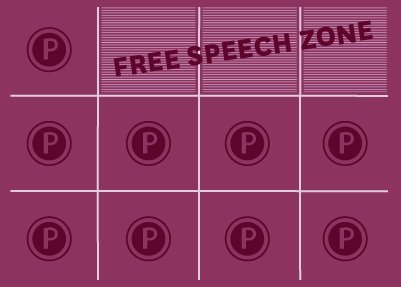
In March 2017, Shaw filed a federal lawsuit challenging Pierce’s free speech zone and the requirement that students get permission before speaking or distributing literature on campus, as well as a system-level policy requiring Pierce and every other college in the Los Angeles Community College District to have free speech zones.[56] The suit is ongoing; in October 2017, the U.S. Department of Justice filed a Statement of Interest in support of Shaw, arguing that, based on the facts alleged in Shaw’s complaint, Pierce and the District’s policies and practices violate student First Amendment rights and denied Shaw “his right to engage in expressive activity in a public forum.”[57] Shaw’s lawsuit is the first of FIRE’s new Million Voices Campaign, which aims to free the voices of one million students by striking down unconstitutional speech codes across the country in partnership with attorneys from FIRE’s Legal Network. By building these partnerships to protect student and faculty speech rights, we hope to expand our reach to force even more universities to defend their policies in court.
Appendix A: Schools By Rating
Red Light

American University
Adams State University
Alabama A&M University
Barnard College
Bates College
Black Hills State University
Boise State University
Boston College
Boston University
Bryn Mawr College
California State University, Channel Islands
California State University, Dominguez Hills
California State University, Fresno
California State University, Long Beach
California State University, Monterey Bay
Carleton College
Case Western Reserve University
Cheyney University of Pennsylvania
Chicago State University
Clark University
Clemson University
Coastal Carolina University
Colby College
Colgate University
College of Charleston
College of the Holy Cross
Colorado College
Connecticut College
Davidson College
Delaware State University
Delta State University
DePauw University
Dickinson College
Drexel University
Eastern Illinois University
Eastern Michigan University
Eastern Washington University
Evergreen State College
Florida State University
Fordham University
Framingham State University
Franklin & Marshall College
Furman University
George Washington University
Georgetown University
Georgia Southern University
Governors State University
Grambling State University
Grinnell College
Harvard University
Howard University
Idaho State University
Jackson State University
Johns Hopkins University
Kean University
Keene State College
Kenyon College
Lafayette College
Lake Superior State University
Lehigh University
Lewis-Clark State College
Lincoln University
Louisiana State University - Baton Rouge
Lyndon State College
Macalester College
Mansfield University of Pennsylvania
Marquette University
McNeese State University
Middle Georgia State University
Middle Tennessee State University
Middlebury College
Missouri State University
Morehead State University
Mount Holyoke College
Murray State University
New Jersey Institute of Technology
New York University
Northeastern Illinois University
Northeastern University
Northern Illinois University
Northern Kentucky University
Oklahoma State University - Stillwater
Pennsylvania State University - University Park
Princeton University
Reed College
Rensselaer Polytechnic Institute
Rice University
Sam Houston State University
Shawnee State University
Southeastern Louisiana University
Southern Illinois University at Carbondale
Southern Illinois University at Edwardsville
St. Olaf College
State University of New York - Albany
State University of New York - Fredonia
State University of New York - New Paltz
Stevens Institute of Technology
Swarthmore College
Syracuse University
Tennessee State University
The College of New Jersey
Troy University
Tufts University
Tulane University
Union College
University of Alabama at Birmingham
University of Alaska Anchorage
University of Alaska Fairbanks
University of California - Riverside
University of Hawaii at Manoa
University of Houston
University of Illinois at Chicago
University of Kansas
University of Louisiana at Lafayette
University of Maine at Presque Isle
University of Massachusetts at Dartmouth
University of Massachusetts at Lowell
University of Miami
University of Michigan - Ann Arbor
University of Michigan - Dearborn
University of Michigan - Flint
University of Minnesota - Morris
University of Montana
University of New Mexico
University of New Orleans
University of North Georgia
University of North Texas
University of Notre Dame
University of Rhode Island
University of Richmond
University of South Carolina Columbia
University of South Dakota
University of Texas at Austin
University of Texas at Dallas
University of Tulsa
University of West Alabama
University of Wisconsin - Oshkosh
University of Wyoming
Utah State University
Utah Valley University
Virginia State University
Wake Forest University
Wellesley College
Wesleyan University
West Chester University of Pennsylvania
Western Illinois University
Whitman College
William Paterson University
Williams College
Yellow Light

Amherst College
Alabama State University
Alcorn State University
Angelo State University
Arkansas State University
Armstrong State University
Athens State University
Auburn University
Auburn University Montgomery
Ball State University
Bard College
Bemidji State University
Binghamton University, State University of New York
Bloomsburg University of Pennsylvania
Bowdoin College
Bowling Green State University
Brandeis University
Bridgewater State University
Brooklyn College, City University of New York
Brown University
Bucknell University
California Institute of Technology
California Maritime Academy
California Polytechnic State University
California State Polytechnic University, Pomona
California State University, Bakersfield
California State University, Chico
California State University, East Bay
California State University, Fullerton
California State University, Los Angeles
California State University, Northridge
California State University, Sacramento
California State University, San Bernardino
California State University, San Marcos
California State University, Stanislaus
California University of Pennsylvania
Cameron University
Central Connecticut State University
Central Michigan University
Central Washington University
Centre College
Christopher Newport University
Claremont McKenna College
Clarion University of Pennsylvania
Colorado Mesa University
Colorado School of Mines
Colorado State University
Colorado State University - Pueblo
Columbia University
Cornell University
Dakota State University
Dartmouth College
East Stroudsburg University of Pennsylvania
East Tennessee State University
Eastern New Mexico University
Elizabeth City State University
Emory University
Fayetteville State University
Ferris State University
Fitchburg State University
Florida A&M University
Florida Atlantic University
Florida Gulf Coast University
Florida International University
Fort Hays State University
Fort Lewis College
Frostburg State University
Georgia Institute of Technology
Georgia State University
Gettysburg College
Grand Valley State University
Hamilton College
Harvey Mudd College
Haverford College
Henderson State University
Humboldt State University
Illinois State University
Indiana State University
Indiana University - Bloomington
Indiana University - Kokomo
Indiana University - Purdue University Columbus
Indiana University - Purdue University Indianapolis
Indiana University of Pennsylvania
Indiana University South Bend
Indiana University, East
Indiana University, Northwest
Indiana University, Southeast
Iowa State University
Jacksonville State University
James Madison University
Kennesaw State University
Kent State University
Kentucky State University
Kutztown University of Pennsylvania
Lock Haven University of Pennsylvania
Longwood University
Louisiana Tech University
Marshall University
Massachusetts College of Liberal Arts
Massachusetts Institute of Technology
Metropolitan State University
Metropolitan State University of Denver
Miami University of Ohio
Michigan State University
Millersville University of Pennsylvania
Missouri University of Science and Technology
Montana State University
Montana Tech of the University of Montana
Montclair State University
New College of Florida
New Mexico State University
Nicholls State University
Norfolk State University
North Carolina A&T State University
North Carolina State University
North Dakota State University
Northern Arizona University
Northern Michigan University
Northwestern Oklahoma State University
Northwestern State University
Northwestern University
Oakland University
Oberlin College
Occidental College
Ohio University
Old Dominion University
Pittsburg State University
Pitzer College
Pomona College
Radford University
Rhode Island College
Richard Stockton College of New Jersey
Rogers State University
Rowan University
Rutgers University - New Brunswick
Saginaw Valley State University
Saint Cloud State University
Salem State University
San Diego State University
San Francisco State University
San Jose State University
Scripps College
Sewanee, The University of the South
Skidmore College
Slippery Rock University of Pennsylvania
Smith College
Sonoma State University
South Dakota State University
Southeast Missouri State University
Southern Connecticut State University
Southern Methodist University
Southwest Minnesota State University
Stanford University
State University of New York - Oswego
State University Of New York - University at Buffalo
State University of New York College of Environmental Science and Forestry
Stony Brook University
Tarleton State University
Temple University
Texas A&M University - College Station
Texas Southern University
Texas State University - San Marcos
Texas Tech University
Texas Woman's University
The City College of New York
The Ohio State University
The University of Virginia's College at Wise
Towson University
Trinity College
University of Akron
University of Alabama
University of Alabama in Huntsville
University of Alaska Southeast
University of Arizona
University of Arkansas
University of California, Merced
University of California, Berkeley
University of California, Davis
University of California, Irvine
University of California, Los Angeles
University of California, San Diego
University of California, Santa Barbara
University of California, Santa Cruz
University of Central Arkansas
University of Central Florida
University of Central Missouri
University of Cincinnati
University of Colorado at Boulder
University of Connecticut
University of Delaware
University of Denver
University of Georgia
University of Hawaii at Hilo
University of Idaho
University of Illinois at Springfield
University of Illinois at Urbana-Champaign
University of Iowa
University of Kentucky
University of Louisville
University of Maine
University of Maine at Fort Kent
University of Mary Washington
University of Massachusetts Amherst
University of Massachusetts Boston
University of Memphis
University of Minnesota - Twin Cities
University of Missouri - Columbia
University of Missouri at Kansas City
University of Missouri at St. Louis
University of Montana Western
University of Montevallo
University of Nebraska - Lincoln
University of Nevada, Las Vegas
University of Nevada, Reno
University of New Hampshire
University of North Alabama
University of North Carolina at Asheville
University of North Carolina at Pembroke
University of North Carolina School of the Arts
University of North Dakota
University of Northern Colorado
University of Northern Iowa
University of Oklahoma
University of Oregon
University of Pittsburgh
University of Rochester
University of South Alabama
University of South Florida
University of South Florida at Saint Petersburg
University of Southern California
University of Southern Indiana
University of Southern Maine
University of Southern Mississippi
University of Texas at Arlington
University of Texas at El Paso
University of Texas at San Antonio
University of Texas at Tyler
University of Toledo
University of Utah
University of Vermont
University of Washington
University of West Florida
University of West Georgia
University of Wisconsin - Eau Claire
University of Wisconsin - Green Bay
University of Wisconsin - La Crosse
University of Wisconsin - Madison
University of Wisconsin - Stout
Valdosta State University
Vanderbilt University
Virginia Commonwealth University
Virginia Polytechnic Institute and State University
Washington & Lee University
Washington State University
Washington University in St. Louis
Wayne State University
Weber State University
West Virginia University
Western Carolina University
Western Kentucky University
Western Michigan University
Western Oregon University
Westfield State University
Wichita State University
Winona State University
Winston Salem State University
Worcester State University
Wright State University
Yale University
Youngstown State University
Green Light

Appalachian State University
Arizona State University
Carnegie Mellon University
Cleveland State University
Duke University
East Carolina University
Eastern Kentucky University
Edinboro University of Pennsylvania
George Mason University
Indiana University - Purdue University Fort Wayne
Kansas State University
Michigan Technological University
Mississippi State University
North Carolina Central University
Oregon State University
Plymouth State University
Purdue University
Purdue University Northwest
Shippensburg University of Pennsylvania
State University of New York - Brockport
State University of New York - Plattsburgh
The College of William and Mary
University of Chicago
University of Florida
University of Maryland - College Park
University of Mississippi
University of North Carolina at Chapel Hill
University of North Carolina at Charlotte
University of North Carolina at Greensboro
University of North Carolina at Wilmington
University of North Florida
University of Pennsylvania
University of Tennessee
University of Virginia
Western State Colorado University
Warning Schools

Baylor University
Brigham Young University
Pepperdine University
Saint Louis University
Vassar College
Worcester Polytechnic Institute
Yeshiva University
Appendix B: Rating Changes, 2016–2017 Academic Year
| School | 2015–2016 Rating | 2016–2017 Rating |
| Appalachian State University | Yellow | Green |
| Armstrong State University | Red | Yellow |
| Athens State University | Red | Yellow |
| Black Hills State University | Green | Red |
| California State Polytechnic University, Pomona | Red | Yellow |
| California State University, Sacramento | Red | Yellow |
| California University of Pennsylvania | Red | Yellow |
| Central Michigan University | Red | Yellow |
| Columbia University | Red | Yellow |
| Edinboro University of Pennsylvania | Yellow | Green |
| East Carolina University | Yellow | Green |
| Emory University | Red | Yellow |
| Gettysburg College | Red | Yellow |
| Iowa State University | Red | Yellow |
| Jacksonville State University | Red | Yellow |
| Kansas State University | Yellow | Green |
| Lewis-Clark State College | Yellow | Red |
| Michigan Technological University | Yellow | Green |
| North Carolina Central University | Yellow | Green |
| Northeastern Illinois University | Yellow | Red |
| Northern Arizona University | Red | Yellow |
| Northwestern Oklahoma State University | Red | Yellow |
| Salem State University | Red | Yellow |
| Smith College | Red | Yellow |
| SUNY Buffalo | Red | Yellow |
| SUNY Plattsburgh | Red | Green |
| Texas Woman's University | Red | Yellow |
| University of Alaska Fairbanks | Yellow | Red |
| University of California, Merced | Red | Yellow |
| University of Central Florida | Red | Yellow |
| University of Georgia | Red | Yellow |
| University of Idaho | Red | Yellow |
| University of Missouri St. Louis | Red | Yellow |
| University of North Carolina at Charlotte | Yellow | Green |
| University of North Carolina at Greensboro | Red | Green |
| University of North Carolina at Wilmington | Yellow | Green |
| University of North Carolina School of the Arts | Red | Yellow |
| University of Oregon | Red | Yellow |
| University of Southern Indiana | Red | Yellow |
| University of Utah | Green | Yellow |
| University of West Florida | Red | Yellow |
| Valdosta State University | Red | Yellow |
| Virginia State University | Yellow | Red |
| Wayne State University | Red | Yellow |
| Western Michigan University | Red | Yellow |
| Winston Salem State University | Red | Yellow |
Appendix C: Schools At Which A Faculty Or Administrative Body Has Adopted A Version Of The ‘Chicago Principles’
American University
Amherst College
Appalachian State University
City University of New York
Claremont McKenna College
Columbia University
Franklin & Marshall College
Georgetown University
Johns Hopkins University
Kansas State University
Kenyon College
Louisiana State University
Michigan State University
Northern Illinois University
Princeton University
Purdue University
SUNY Buffalo
University of Denver
University of Montana
University of Minnesota
University of Missouri System
University of Southern Indiana
University of Virginia College at Wise
University of Wisconsin System
Vanderbilt University
Washington University in St. Louis
Winston-Salem State University
Appendix D: Schools With ‘Free Speech Zones’
Arkansas State University
Auburn University
Auburn University Montgomery
Ball State University
Bemidji State University
California State University, Channel Islands
California State University, Dominguez Hills
California State University, Los Angeles
California State University, San Marcos
Cameron University
Cornell University
East Carolina University
East Tennessee State University
Eastern Washington University
Elizabeth City State University
Florida State University
Frostburg State University
Keene State College
Lyndon State College
Montclair State University
Morehead State University
Murray State University
Northern Illinois University
Old Dominion University
Rutgers University
Saint Cloud State University
Salem State University
Southeast Missouri State University
Southeastern Louisiana University
Southern Illinois University at Carbondale
Southern Illinois University at Edwardsville
Stanford University
Texas Woman’s University
The College of New Jersey
Troy University
University of Central Arkansas
University of Colorado at Boulder
University of Hawaii at Manoa
University of Illinois at Chicago
University of Illinois at Urbana-Champaign
University of Kentucky
University of Massachusetts Amherst
University of Massachusetts Dartmouth
University of Montana
University of North Carolina at Pembroke
University of North Carolina School of the Arts
University of North Georgia
University of South Dakota
University of West Alabama
University of West Florida
University of West Georgia
Valdosta State University
Notes
[1] See, e.g., Gooding v. Wilson, 405 U.S. 518 (1972) (holding that a Georgia statute prohibiting “opprobrious words or abusive language” was unconstitutional because those terms, as commonly understood, encompassed speech protected by the First Amendment).
[2] For example, Pepperdine University’s Student Handbook provides that “[i]n keeping with Pepperdine University’s Christian mission and its heritage in Churches of Christ, all members of the University community are encouraged to respect the teachings of Jesus and historic, biblical Christianity. It is expected that all students will adhere to biblical teaching regarding moral and ethical practices. Engaging in or promoting conduct or lifestyles inconsistent with biblical teaching is not permitted.” Code of Conduct, "PEPPERDINE UNIV. SEAVER COLL. OF LETTERS, ARTS, AND SCI. 2017–2018 STUDENT HANDBOOK, at 5, available at https://www.pepperdine.edu/admission/student-life/policies/content/seaver-handbook.pdf. It would be clear to any reasonable person reading this policy that students are not entitled to unfettered free speech at Pepperdine.
[3] FIRE has designated the following schools as “Warning” schools: Baylor University, Brigham Young University, Pepperdine University, Saint Louis University, Vassar College, Worcester Polytechnic Institute, and Yeshiva University.
[4] See Appendix A for a full list of schools by rating.
[5] Appalachian State University, East Carolina University, Edinboro University of Pennsylvania, Kansas State University, Michigan Technological University, North Carolina Central University, UNC Charlotte, UNC Greensboro, and UNC Wilmington all joined the ranks of green light schools this year.
[6] Press Release, Found. for Individual Rights in Educ., FIRE to ‘Red Light’ Public Universities: Revise Your Unconstitutional Speech Codes (Nov. 2, 2016), https://www.thefire.org/fire-to-red-light-public-universities-revise-your-unconstitutional-speech-codes.
[7] Title IX of the Education Amendments of 1972, 20 U.S.C. § 1681, provides that: “No person in the United States shall, on the basis of sex, be excluded from participation in, be denied the benefits of, or be subjected to discrimination under any education program or activity receiving Federal financial assistance.”
[8] Eugene Volokh, Freedom of Speech, Cyberspace, Harassment Law, and the Clinton Administration, "63 LAW & CONTEMP. PROB. 299 (2000).
[9] Id. at 315.
[10] Anthony Lewis, Abroad at Home; Living in a Cocoon, N.Y. TIMES, Nov. 27, 1995, http://www.nytimes.com/1995/11/27/opinion/abroad-at-home-living-in-a-cocoon.html.
[11] McCauley v. Univ. of the V.I., 618 F.3d 232 (3d Cir. 2010); DeJohn v. Temple Univ., 537 F.3d 301 (3d Cir. 2008); Dambrot v. Cent. Mich. Univ., 55 F.3d 1177 (6th Cir. 1995); Univ. of Cincinnati Chapter of Young Am. for Liberty v. Williams, 2012 U.S. Dist. LEXIS 80967 (S.D. Ohio Jun. 12, 2012); Smith v. Tarrant Cty. Coll. Dist., 694 F. Supp. 2d 610 (N.D. Tex. 2010); Coll. Republicans at S.F. St. Univ. v. Reed, 523 F. Supp. 2d 1005 (N.D. Cal. 2007); Roberts v. Haragan, 346 F. Supp. 2d 853 (N.D. Tex. 2004); Bair v. Shippensburg Univ., 280 F. Supp. 2d 357 (M.D. Pa. 2003); Booher v. N. Ky. Univ. Bd. of Regents, No. 2:96-CV-135, 1998 U.S. Dist. LEXIS 11404 (E.D. Ky. July 21, 1998); Corry v. Leland Stanford Junior Univ., No. 740309 (Cal. Super. Ct. Feb. 27, 1995) (slip op.); UWM Post, Inc. v. Bd. of Regents of the Univ. of Wis., 774 F. Supp. 1163 (E.D. Wisc. 1991); Doe v. Univ. of Mich., 721 F. Supp. 852 (E.D. Mich. 1989). In addition, numerous institutions have voluntarily modified their speech codes as part of settlement agreements. See, e.g., Press Release, Found. for Individual Rights in Educ., Victory: Texas College Settles Free Speech Lawsuit After Telling Student that Gun Rights Sign Needs ‘Special Permission’ (May 4, 2016), https://www.thefire.org/victory-texas-college-settles-free-speech-lawsuit-after-telling-student-that-gun-rights-sign-needs-special-permission; Press Release, Found. for Individual Rights in Educ., Victory: Lawsuit Settlement Restores Free Speech Rights at Dixie State U. After Censorship of Bush, Obama, Che Flyers (Sept. 17, 2015), available at https://www.thefire.org/victory-lawsuit-settlement-restores-free-speech-rights-at-dixie-state-u-after-censorship-of-bush-obama-che-flyers.
[12] California maintains a law that applies the protections of the First Amendment to private, nonsectarian institutions of higher education. Section 94367 of the California Education Code — the so-called “Leonard Law” — provides that “[n]o private postsecondary educational institution shall make or enforce a rule subjecting a student to disciplinary sanctions solely on the basis of conduct that is speech or other communication that, when engaged in outside the campus or facility of a private postsecondary institution, is protected from governmental restriction by the First Amendment to the United States Constitution or Section 2 of Article I of the California Constitution.” The code further provides that “[t]his section does not apply to a private postsecondary educational institution that is controlled by a religious organization, to the extent that the application of this section would not be consistent with the religious tenets of the organization.”
[13] Student Rights and Responsibilities, WHITMAN COLL. STUDENT HANDBOOK, available at https://www.whitman.edu/academics/academic-resource-center/student-handbook/student-rights-and-responsibilities.
[14] Rules of Public Order, UNION COLL. STUDENT HANDBOOK, available at https://www.union.edu/offices/dean/_forms/handbook2017-2018.pdf.
[15] Committee on Freedom of Expression at the University of Chicago, Report on the Committee of Freedom of Expression, available at http://provost.uchicago.edu/FOECommitteeReport.pdf. For a complete list of institutions that have adopted versions of the Chicago Statement, see https://www.thefire.org/chicago-statement-university-and-faculty-body-support.
[16] F&M Statement on Freedom of Expression, available at https://www.fandm.edu/president/f-m-statement-on-freedom-of-expression.
[17] Speech and Expression Policy, available at https://studentaffairs.georgetown.edu/policies/speech-expression#General.
[18] Jordan B Peterson (@jordanbpeterson), TWITTER (Apr. 18, 2017, 3:02 PM), https://twitter.com/jordanbpeterson/status/854409795335598080?lang=en.
[19] See Letter from Sarah McLaughlin, Senior Program Officer, Found. for Individual Rights in Educ., to Thomas L. Hellie, President, Linfield College (June 9, 2017), available at https://www.thefire.org/fire-letter-to-linfield-college-june-2017.
[20] Id.
[21] Forsyth Cty. v. Nat’list Movement, 505 U.S. 123, 134–35 (1992).
[22] Letter from Adam B. Steinbaugh, Senior Program Officer, Found. for Individual Rights in Educ., to Mark W. Huddleston, President, University of New Hampshire (Apr. 6, 2017), available at https://www.thefire.org/fire-letter-to-the-university-of-new-hampshire-april-6-2017.
[23] General Governing Policies., DEP’T OF RESIDENCE LIFE AND HOUSING CMTY. LIVING GUIDE, available at http://www.vsu.edu/files/docs/residential-living/living-guide.pdf.
[24] UHS 2017–18 Student Housing License Agreement, available at https://www.cpp.edu/~housing/forms-policies/hla-policies-and-regulations.shtml.
[25] See Letter from Shaheena Simons and Damon Martinez, U.S. Dep’t of Justice, to Robert G. Frank, President, Univ. of N.M. (Apr. 22, 2016), available at https://www.justice.gov/opa/file/843901/download; Letter from Anurima Bhargava, Chief, Civil Rights Div., U.S. Dep’t of Justice, and Gary Jackson, Reg’l Dir., Office for Civil Rights, U.S. Dep’t of Educ., to Royce Engstrom, President, Univ. of Mont. and Lucy France, Univ. Counsel, Univ. of Mont. (May 9, 2013), available at http://www.justice.gov/opa/documents/um-ltr-findings.pdf.
[26] Press Release, Found. for Individual Rights in Educ., Dear Colleague: It’s Over! Education Department Rescinds Controversial Letter (Sept. 22, 2017), available at https://www.thefire.org/dear-colleague-its-over-education-department-rescinds-controversial-2011-letter.
[27] Georgia Southern University Policy Prohibiting Sexual Harassment, available at http://president.georgiasouthern.edu/diversity/policy-and-procedures/sexual-harassment.
[28] State University of New York New Paltz Non Discrimination/Non Harassment Policy Statement and Procedures for Reporting Incidents of Harassment, Discrimination and Sexual Violence, available at https://www.newpaltz.edu/media/academic-affairs/Non-Discrimination_Non-Harrassment%20Policy%2002-14.pdf.
[29] See, e.g., DeJohn v. Temple Univ., 537 F.3d 301 (3d Cir. 2008) (holding that Temple University’s sexual harassment policy was unconstitutionally broad); Doe v. Univ. of Mich., 721 F. Supp. 852 (E.D. Mich. 1989) (holding that University of Michigan’s discriminatory harassment policy was unconstitutionally broad); Booher v. N. Ky. Univ. Bd. of Regents, 1998 U.S. Dist. LEXIS 11404 (E.D. Ky. Jul. 21, 1998) (holding that Northern Kentucky University’s sexual harassment policy was unconstitutionally broad).
[30] Letter from Susan Kruth, Senior Program Officer, Found. for Individual Rights in Educ., to Wayne A.I. Frederick, President, Howard University (June 16, 2017), available at https://www.thefire.org/fire-letter-to-howard-university-june-16-2017.
[31] “Dear Colleague” Letter from Russlynn Ali, Assistant Sec’y for Civil Rights, U.S. Dep’t of Educ. (Oct. 26, 2010), available at http://www2.ed.gov/about/offices/list/ocr/letters/colleague-201010.html.
[32] “In the place of parents.”
[33] Harassment Policy, GETTYSBURG COLL. HANDBOOK OF STUDENT RIGHTS AND RESPONSIBILITIES, available at http://www.gettysburg.edu/about/offices/college_life/srr/student_handbook/policy-details.dot?id=eb0db757-e02d-4bb9-838c-b0449d38e2f2.
[34] Student Conduct Code, available at https://www.isu.edu/media/libraries/student-affairs/5000-Student-Conduct-System.pdf.
[35] See Texas v. Johnson, 491 U.S. 397, 414 (1989) (“If there is a bedrock principle underlying the First Amendment, it is that the government may not prohibit the expression of an idea simply because society finds the idea itself offensive or disagreeable.”) See also Saxe v. State Coll. Area Sch. Dist., 240 F.3d 200, 206 (3d Cir. 2001) (holding that there is “no question that the free speech clause protects a wide variety of speech that listeners may consider deeply offensive….”); Bair v. Shippensburg Univ., 280 F. Supp. 2d 357 (M.D. Pa. 2003) (“[R]egulations that prohibit speech on the basis of listener reaction alone are unconstitutional both in the public high school and university settings.”); Doe v. Univ. of Mich., 721 F. Supp. 852 (E.D. Mich. 1989) (“Nor could the University proscribe speech simply because it was found to be offensive, even gravely so, by large numbers of people.”)
[36] “Responsibilities of Students,” Utah State University Student Code, available at https://studentconduct.usu.edu/studentcode/article1.
[37] “Introductory Statement,” Code of Conduct, LAFAYETTE COLL. STUDENT HANDBOOK, available at https://conduct.lafayette.edu/wp-content/uploads/sites/93/2017/08/StudentHandboook-2017-18.pdf.
[38] See, e.g., Coll. Republicans at S.F. St. Univ. v. Reed, 523 F. Supp. 2d 1005 (N.D. Cal. 2007) (enjoining enforcement of university civility policy because “there is a substantial risk that the civility requirement will inhibit or deter use of the forms and means of communication that, to many speakers in circumstances of the greatest First Amendment sensitivity, will be the most valued and the most effective.”)
[39] Email/User Account Policy, Black Hills State Univ., available at http://bhsu.edu/iits/AboutUs/Policies/EmailUserAccountPolicy/tabid/9703/Default.aspx.
[40] Acceptable Use Policy, Dartmouth Coll., available at http://tech.dartmouth.edu/its/services-support/help-yourself/knowledge-base/acceptable-use-policy.
[41] Letter from Ari Z. Cohn, Dir., Individual Rights Def. Program, Found. for Individual Rights in Educ., to Garrey Carruthers, Chancellor, N.M. State Univ. (July 26, 2017), available at https://www.thefire.org/letter-from-fire-to-new-mexico-state-university-president-garrey-carruthers.
[42] Letter from Garrey Carruthers, Chancellor, N.M. State Univ., to Ari Z. Cohn, Dir., Individual Rights Def. Program, Found. for Individual Rights in Educ. (Aug. 3, 2017), available at https://www.thefire.org/letter-from-new-mexico-state-university-president-garrey-carruthers-to-fire.
[43] Press Release, Found. for Individual Rights in Educ., VICTORY: Fairmont State University Revises Unconstitutional Solicitation Policy (Apr. 21, 2017), available at https://www.thefire.org/victory-fairmont-state-university-revises-unconstitutional-solicitation-policy.
[44] Id.
[45] Regulations for Posting and Distributing Organization Materials, ATHENS STATE UNIV. STUDENT CLUBS & ORGS. HANDBOOK, available at http://www.athens.edu/pdfs/policies/Operating/Student-Affairs/Student-Clubs-Orgs-Handbook.pdf?x75869.
[46] Bridgewater State University Free Speech and Demonstration Policy, available at https://www.thefire.org/wp-content/uploads/2015/05/BSU_Free_Speech_and_Demonstration_Policy_Revised_2017.pdf.
[47] See Appendix D for a full list of schools with free speech zone policies.
[48] For more detailed information on this and other First Amendment lawsuits, see "Spotlight On: First Amendment Litigation".
[49] UTAH CODE ANN. §§ 53B-27-101–53B-27-105 (2017), available at https://le.utah.gov/~2017/bills/static/HB0054.html.
[50] COLO. REV. STAT. § 23-5-144 (2017), available at https://leg.colorado.gov/sites/default/files/documents/2017A/bills/2017a_062_signed.pdf.
[51] Tennessee Senate Bill 723, Campus Free Speech Protection Act, available at http://www.capitol.tn.gov/Bills/110/Amend/SA0333.pdf.
[52] The University of South Dakota Non-Commercial Free Speech Policy and Reservation Form, available at http://www.usd.edu/~/media/files/student-life/muc/freespeechregistrationpolicy.ashx?la=en.
[53] Azhar Majeed, Putting Their Money Where Their Mouth Is: The Case for Denying Qualified Immunity to University Administrators for Violating Students’ Speech Rights, 8 CARDOZO PUB. L., POL’Y & ETHICS J. 3, 515 (2010).
[54] Gerlich v. Leath, No. 16-1518 (8th Cir. June 13, 2017).
[55] Id.
[56] Complaint in Shaw v. Burke, No. 17-cv-02386 (C.D. Cal. filed Mar. 28, 2017), available at https://www.thefire.org/complaint-shaw-v-burke.
[57] Press Release, Found. for Individual Rights in Educ., Department of Justice Files Statement of Interest in FIRE Lawsuit (Oct. 25, 2017), https://www.thefire.org/department-of-justice-files-statement-of-interest-in-fire-lawsuit.

